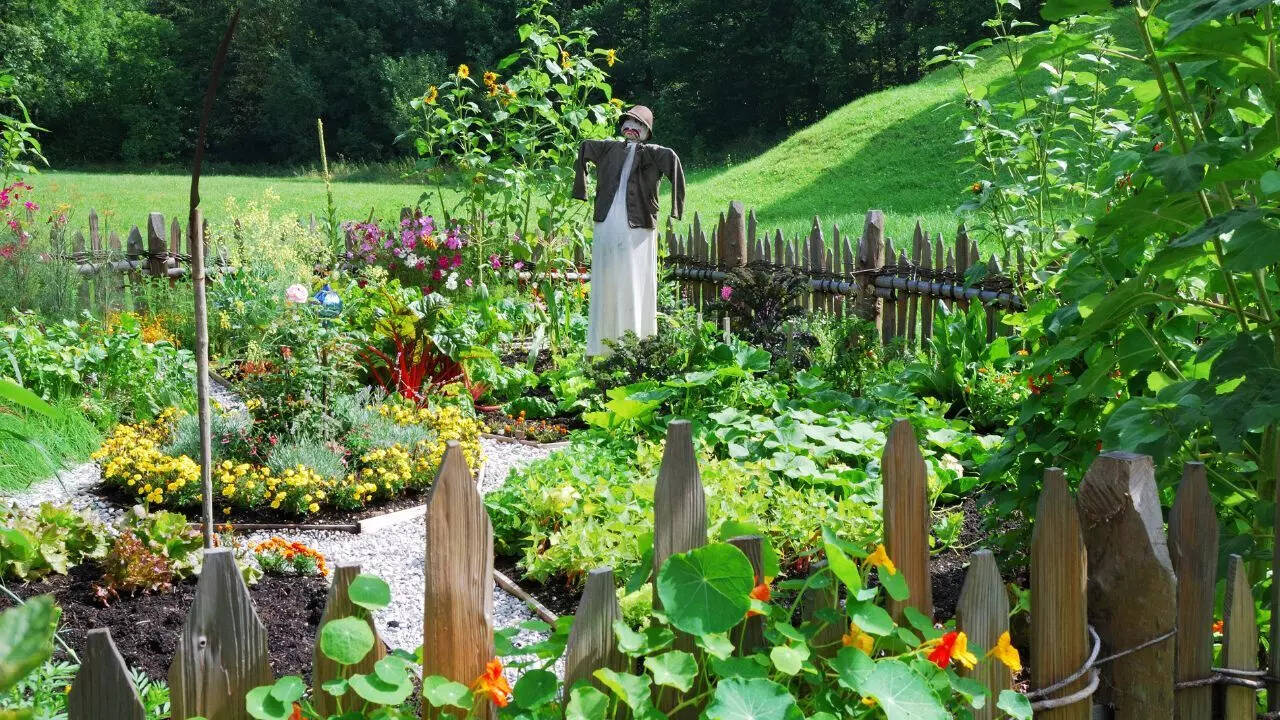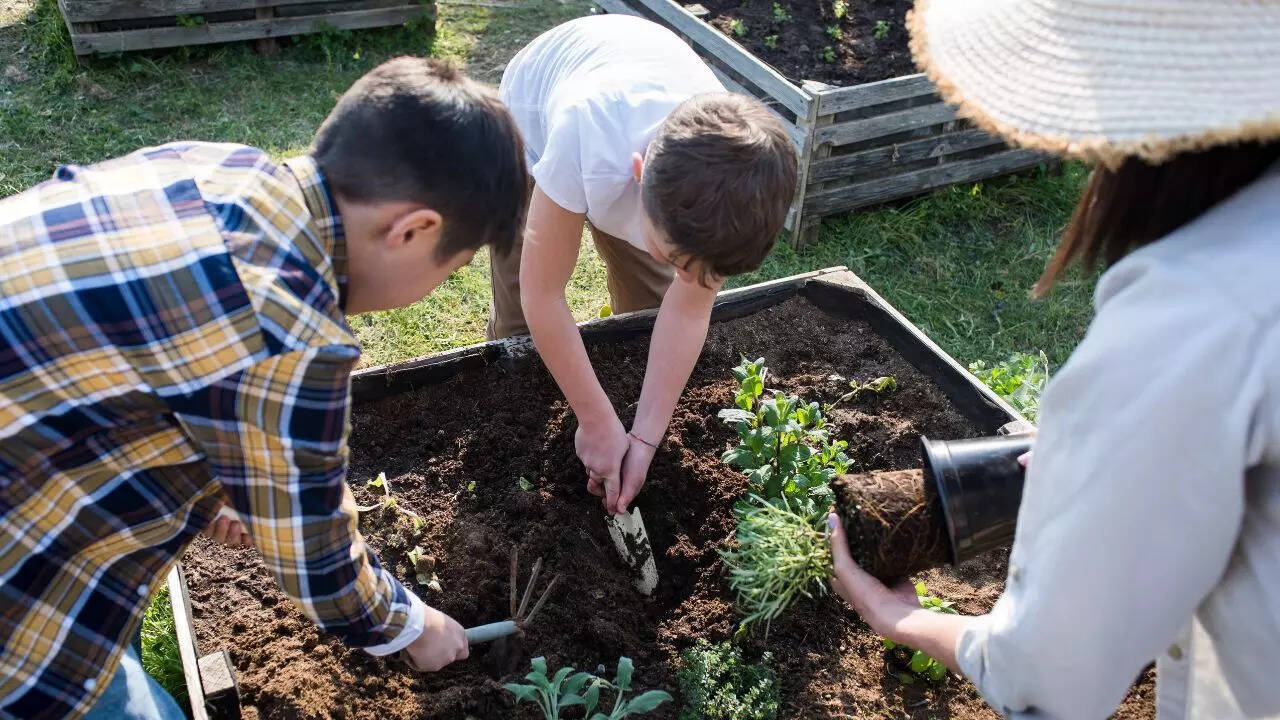The monsoon season offers a unique opportunity for gardeners to cultivate lush, vibrant kitchen gardens. The rains bring respite from the summer heat, softening the earth and providing the perfect conditions for growth. This is an ideal time for both seasoned gardeners and beginners to connect with nature and enjoy the rewards of homegrown produce.

The monsoon season provides gentle showers that maintain soil moisture, reducing the need for frequent watering. Temperatures ranging from 20°C to 30°C (68°F to 86°F) encourage seed germination, while high humidity facilitates efficient nutrient absorption. Remember to ensure adequate drainage to prevent waterlogging and maximize your success.
Here's a simple guide to help you get started:
Location Selection: Choose a spot that receives 4-6 hours of indirect sunlight daily. Ensure the area is not prone to waterlogging and has good air circulation to prevent fungal diseases.

Soil Preparation: Gently loosen the soil and incorporate compost to improve its structure. Add well-rotted manure or other organic matter to enrich the soil with essential nutrients.
Planting: Sow seeds or plant seedlings, adhering to recommended spacing guidelines for optimal growth. Consider companion planting to maximize space and promote beneficial interactions between plants.
Watering: Rely primarily on rainwater, but monitor soil moisture levels to ensure the soil isn't waterlogged. Check moisture by inserting your finger into the soil.
Mulching: Apply a 2-3 inch layer of mulch, such as dried leaves or straw, around your plants. Keep the mulch a few inches away from the stems to retain moisture and regulate soil temperature.
Pest Control: Use natural deterrents like neem oil or garlic-chili spray to protect your plants from pests. Encourage beneficial insects like ladybugs to help control common garden pests.
Harvesting: Regularly harvest leafy greens and young vegetables to encourage continuous production. Harvest in the morning for the best flavor and texture.
Monsoon rains loosen compacted soil, making it easier to work with. To further enhance fertility, mix in organic compost, farmyard manure, or leaf mold. These materials will break down rapidly in the moist conditions, releasing vital nutrients. Consider adding natural additives like neem cake or bone meal for enhanced nutrition and pest resistance. Before planting, test soil drainage by filling a small hole with water; it should drain within 2-4 hours. For clay-heavy soils, add cocopeat or coarse sand to improve aeration and prevent waterlogging.

Newer articles
Older articles
 Evil Eye Amulet: Protective Charm or Portal to Dark Forces? A Cultural Debate
Evil Eye Amulet: Protective Charm or Portal to Dark Forces? A Cultural Debate
 Jayden Seales Fined by ICC for Provocative Gesture During Australia Test Match
Jayden Seales Fined by ICC for Provocative Gesture During Australia Test Match
 Paralympic Archer Sheetal Devi's Viral Video Shows Her Driving Car with Feet, Defying Expectations
Paralympic Archer Sheetal Devi's Viral Video Shows Her Driving Car with Feet, Defying Expectations
 Broad Slams India's Team Selection After Headingley Test Loss, Calls for Roster Tweaks at Edgbaston
Broad Slams India's Team Selection After Headingley Test Loss, Calls for Roster Tweaks at Edgbaston
 Umpire Controversy Erupts: West Indies Coach Sammy Questions Holdstock's Consistency in Barbados Test
Umpire Controversy Erupts: West Indies Coach Sammy Questions Holdstock's Consistency in Barbados Test
 Sachin Tendulkar: 1983 World Cup Win Sparked My Cricket Dream at Age 10
Sachin Tendulkar: 1983 World Cup Win Sparked My Cricket Dream at Age 10
 Jaiswal's Fielding Woes: Ex-India Star Kaif Points to Potential Cause for Dropped Catches in England Test
Jaiswal's Fielding Woes: Ex-India Star Kaif Points to Potential Cause for Dropped Catches in England Test
 Team India's England Tour: Rahul's Sleep Strategy, Coaching Rituals, and Coffee Culture Revealed
Team India's England Tour: Rahul's Sleep Strategy, Coaching Rituals, and Coffee Culture Revealed
 Suryakumar Yadav Successfully Completes Sports Hernia Surgery, Eyes Return to Cricket
Suryakumar Yadav Successfully Completes Sports Hernia Surgery, Eyes Return to Cricket
 Gujarat Cricket Set to Launch T20 League in 2025-26 Season
Gujarat Cricket Set to Launch T20 League in 2025-26 Season